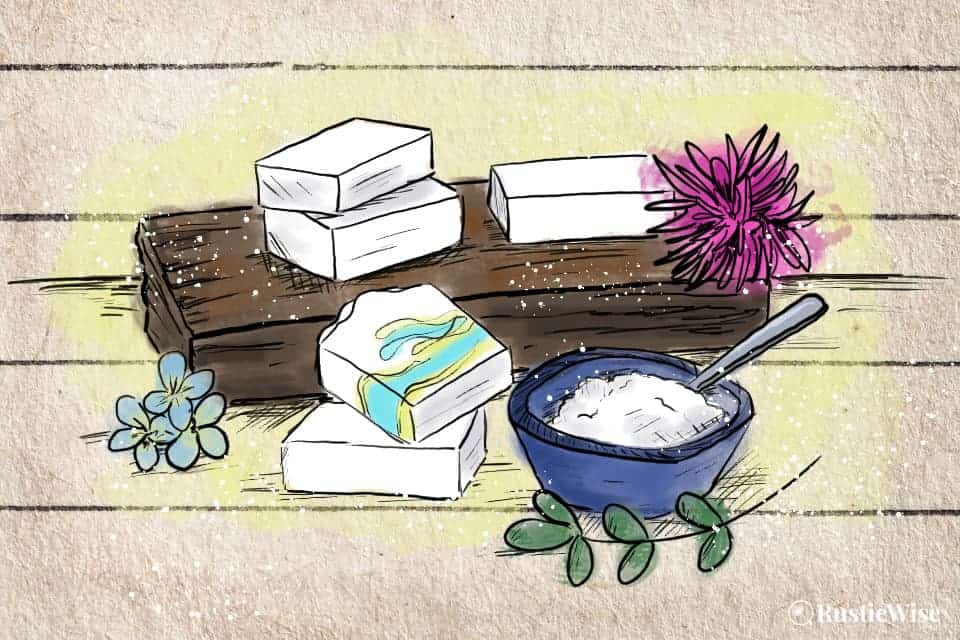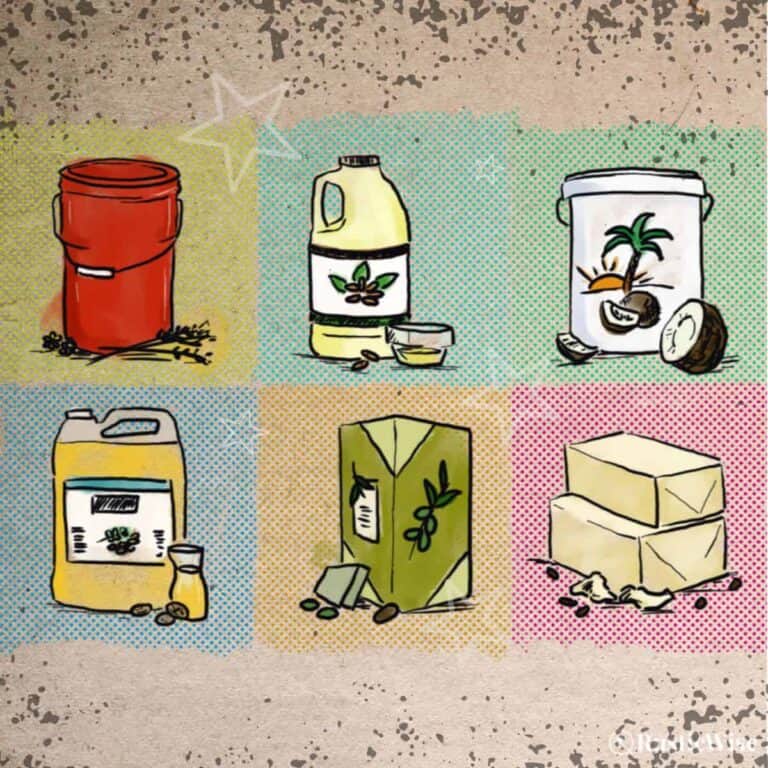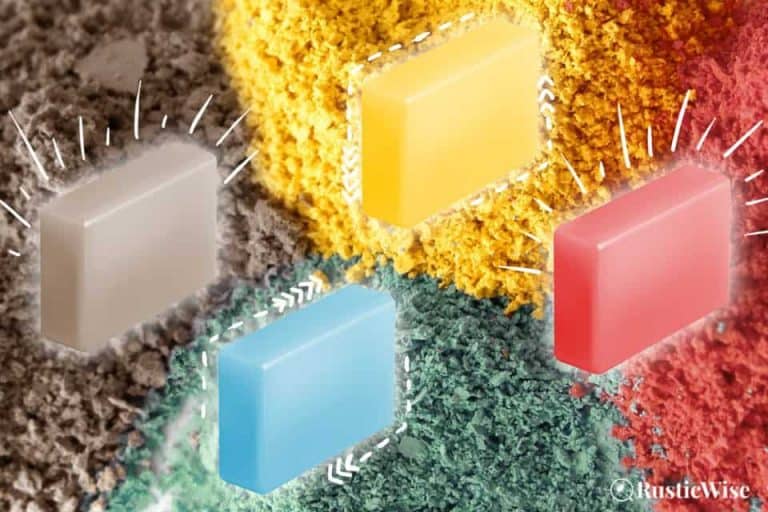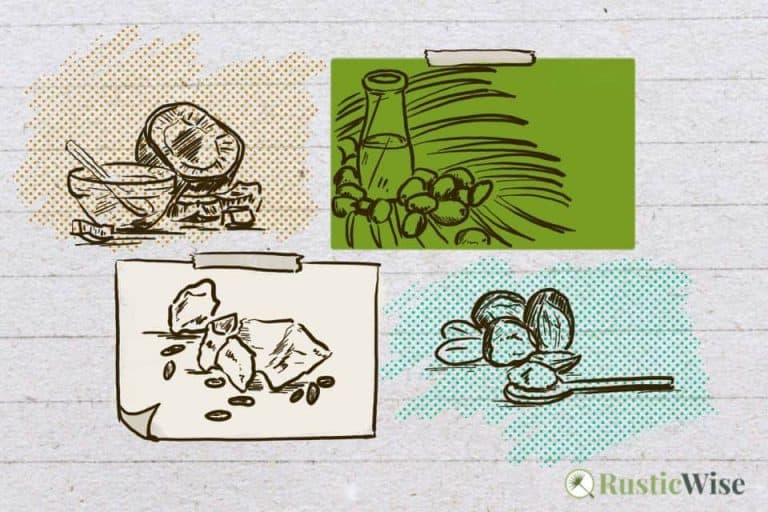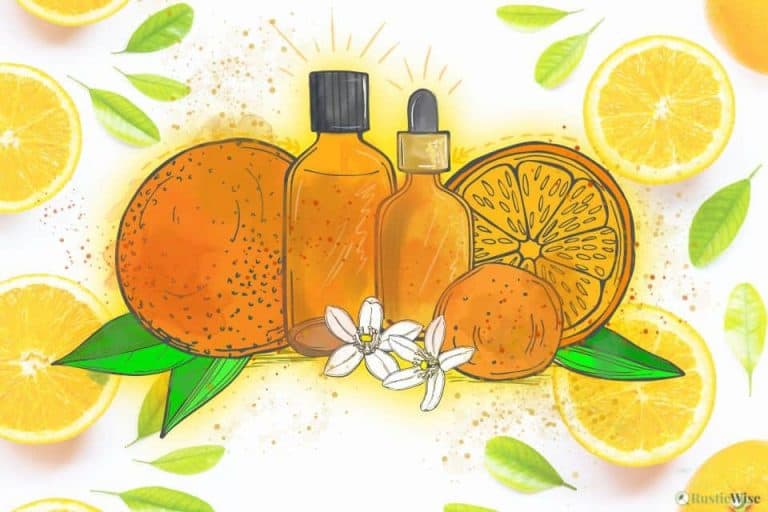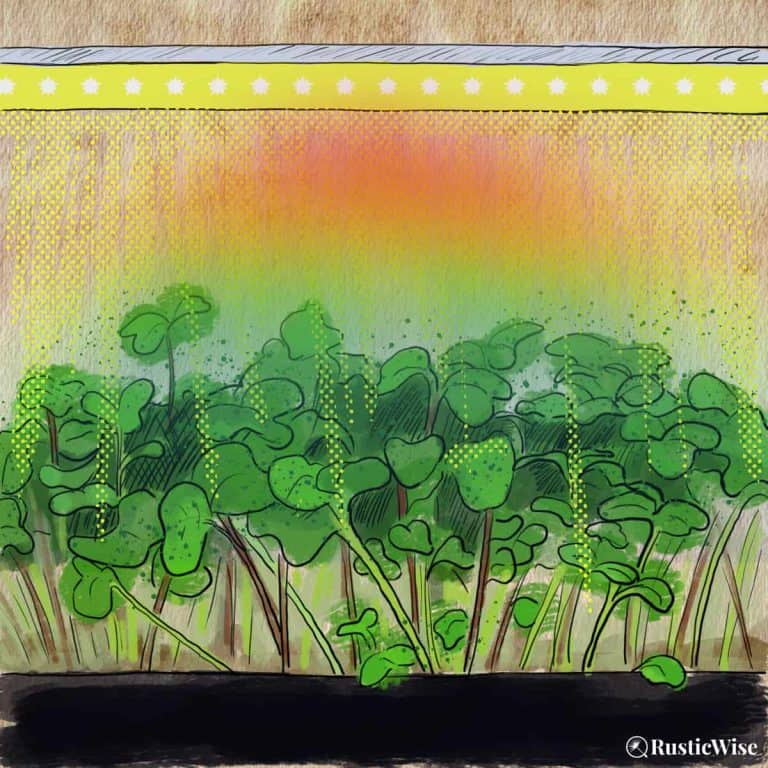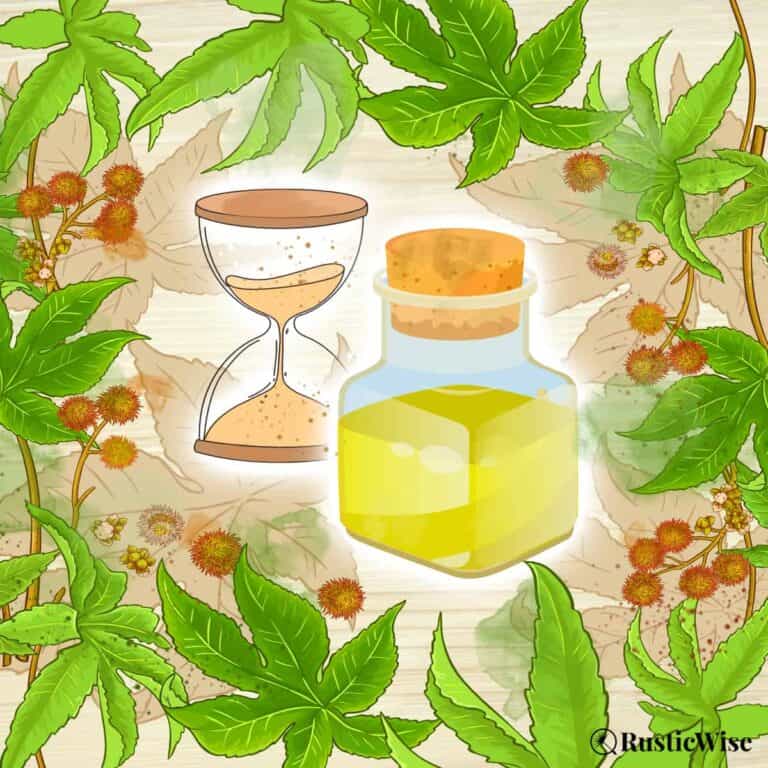Titanium Dioxide in Soap: Tips on Getting a Whiter, Brighter Bar
RusticWise is supported by its readers. When you purchase through links on our site, we may earn an affiliate commission. As an Amazon Associate, we earn from qualifying purchases. Thank You!
Sure, cream-colored or off-white soap bars can work for certain situations. But sometimes you want a pop of white, or an all-over snow-white bar of soap.
One way to achieve this bright-white look is to use pure titanium dioxide in soap. Titanium is a common metal element mined from the earth and is also found in animals and plants. When titanium combines with oxygen, you get titanium oxide. This pigment comes in powder form that’s water or oil discernable. Use it alone to get a white color, or mix with other pigments.
Like any other soap additives, there are a few tips and tricks on using this pigment. Use too much and you’ll get white speckles throughout your finished bar, or glycerin rivers. We’ll go over how to use this in cold process soap, hot process soap, and melt and pour.
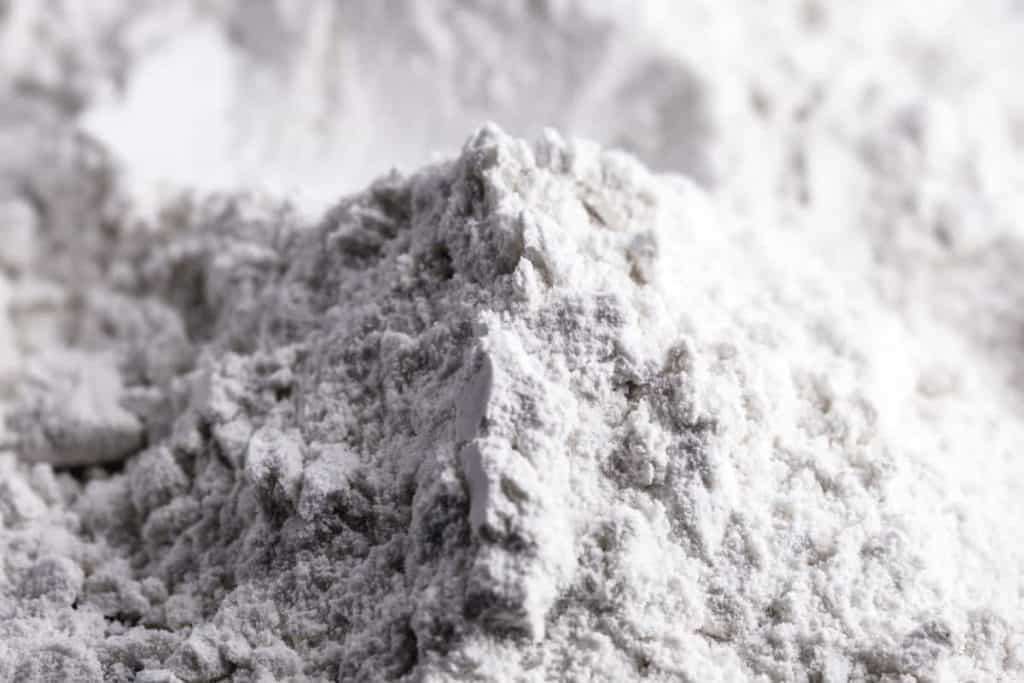
Credit: Deposit Photos
What exactly is titanium dioxide?
Did you know that titanium is the ninth most common element found in the earth’s crust?¹ It’s a naturally occurring metal that forms titanium oxide when it interacts with oxygen.
This fine white mineral pigment (TiO₂) has many practical applications:¹
- Acts as a colorant in cosmetic products, soap, and toothpaste. It’s also used to brighten skin tone and cover blemishes. This versatile pigment is used to make crisp sheets of white paper.
- Filters out UV light and acts as a sun protective agent. You’ll find it as a common ingredient in sunscreens.
- Improves durability and boosts opacity in paints and other finished surfaces such as textiles, flooring and roofing materials.
- Improves shelf life of some food products, beverages, and pharmaceuticals.
- Improves pliability and reduces cracking in adhesives and other surfaces.
Why use titanium dioxide in soap?
The main reason soap makers add a touch of this white pigment to homemade soap is to bump up the brightness factor—you’ll get a white soap bar.
Besides making a pure white (or part white) bar of soap, many people experiment with this white powder to achieve a specific look. You can use it to boost opacity or lighten or enhance other colors.
Get creative and try mixing this oxide with micas for a more opaque look.
Tip: When buying this pigment, ensure you buy a pure form that has been filtered of any impurities. You can find pure titanium dioxide at most soap suppliers.
Is titanium dioxide safe to use?
The main safety concern when using TiO₂ is that it may have adverse effects when inhaled.
(The same could be said for many other substances that are inhaled.)
The following agencies have deemed this mineral pigment as safe to use in cosmetics, personal care products, and as a food additive:
- The U.S. Food and Drug Administration (FDA) says, “The color additive titanium dioxide may be safely used in cosmetics, including cosmetics intended for use in the area of the eye, in amounts consistent with good manufacturing practice.”³
- Health Canada allows for the use of TiO₂ in food processing as it didn’t find any health concerns under its scientific review.¹
You may have heard of troubling reports about the potential health risks of using this coloring agent from various health authorities, such as the International Agency for Research on Cancer (IARC).
The IARC classifies TiO₂ as a Group 2B carcinogen, meaning it’s a “possible carcinogen” to humans.
This warning comes after a study performed on rats in which some animals that were exposed to high levels of fine titanium dust particle developed lung cancers. Fine particle dust when inhaled may harm or irritate the respiratory tract.
This animal study leads some people to infer that if rats developed cancers, people who work in environments with high levels of titanium dioxide dust particles (such as manufacturing plants) must also develop cancer.
Luckily, this link hasn’t been proven true.
The Canadian Centre for Occupational Health & Safety says, “it should be noted that the human studies conducted so far do not suggest an association between occupational exposure to titanium dioxide and an increased risk for cancer.”²
Still, it’s important to note that we must take proper safety precautions to limit exposure to dust particles.
The takeaway: TiO₂ is a safe pigment to use under normal circumstances. The main health issue with this mineral powder is possible inhalation. When making homemade soap and other DIY products, limit your inhalation by wearing a mask.
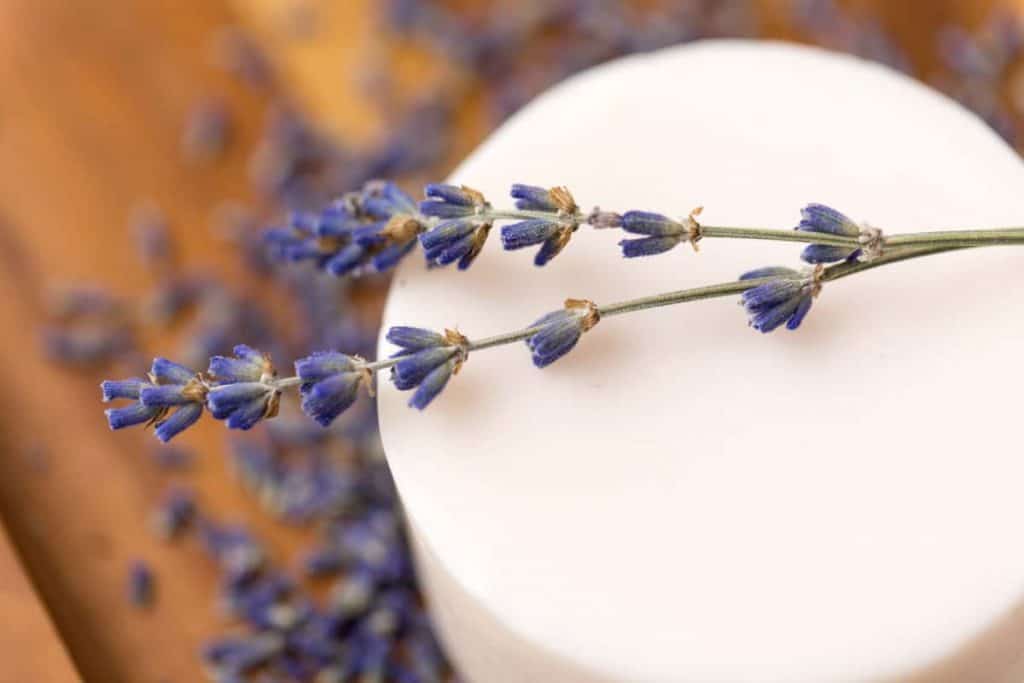
Types of titanium dioxide for soap
The bulk of the titanium dioxide produced today (roughly 98 percent) is pigment-grade. This means that the size of the particles is regulated. Pigment-grade particles are designed to scatter light and improve brightness and opacity.
The kind of TiO₂ we use to whiten soap batches is pigment-grade.
The other 2 percent of TiO₂ produced is nano-sized. These tiny particles are designed to absorb UV light (such as in sunscreens).
Not all types of TiO₂ work in the same way. While the results should be the same (whiter soap), the key differences lie in when and how you add the powder to the soap making process.
There are three main types of this colorant:
- Water soluble: Dissolves easily in water. Ideal for use in cold process batches where you want to color the entire batch white. You can add to your lye water solution once cooled.
- Oil soluble: Dissolves easily in oils. Ideal for use in melt and pour, or hot process when adding to oils. You can also use oil soluble TiO₂ to color part of your cold process batch. For example, add TiO₂ to part of your batter if you plan on swirling or layering.
- Both water and oil discernable: You get the best of both worlds. If you have this type of pigment, you’re free to add it to various stages of the soap making process.
How to use add titanium dioxide to your next batch of soap
When adding this mineral pigment, it’s important to go easy. You can always add more later if needed.
If you add too much, you might see white flecks or in the finished product. Or the texture could feel chalky or powdery.
Plus, an overload of powdered TiO₂ results in clumping. So remember to mix well!
As with most things in life, there’s more than one way to do things. The following are just a few general guidelines. It’s always best to follow the specific guidelines on your product’s label.
Feel free to experiment and adjust accordingly!
Note: While TiO₂ is great for making soap white, it does NOT prevent discoloration from using certain fragrance oils. For example, if you’re adding vanilla fragrance, this often turns soap a yellow or light brown color. You may still need to use a color stabilizer in addition to TiO₂.
Cold process
How much to add:
- A good amount to start with is 1/2 teaspoon per pound of oils. Add more if needed—as much as 1 teaspoon per pound of oils.
When to add:
- You can add a water-soluble TiO₂ to your lye water solution. Just ensure the lye solution has cooled and you are just about to mix with oils. If you add your pigment when the solution is very hot, your batch will be more prone to developing glycerin rivers. Adding to your lye water will color your entire batch white.
- Or, you can add directly to your batter when it has reached light trace. Use your immersion blender to break up any clumps.
- Or, you can add an oil-soluble TiO₂ to your oils.
Hot process
How much to add:
- A good amount to start with is 1/2 teaspoon per pound of oils. Add more if needed—as much as 1 teaspoon per pound of oils.
When to add:
- For hot process, the oil-soluble version works like a charm. Add to your oils for an easy way to add a bit of white.
- You can add a water-soluble TiO₂ to your lye water solution. Just ensure the lye solution has cooled and you are just about to mix with oils. Adding to your lye water will color your whole batch white.
Melt and pour
Sometimes you can find liquid titanium dioxide at some suppliers. Liquid makes it easier to incorporate into M & P which doesn’t get as hot as other methods.
And if you have to choose between a water or oil dispersible form, choose the oil dispersible for melt and pour.
How much to add:
- Start with between 1/8 to 1/4 teaspoon per pound of soap. Adjust as needed.
When to add:
- While there’s no hard and fast rule, ideally you would add an oil soluble TiO₂ with a bit of glycerin to break up any clumps. Or, you could add directly to your melted soap. Just remember to whisk well!
Tips for using titanium dioxide
- Avoid inhaling powdered pigments and wear a mask.
- Mix well with a small whisk to avoid clumps.
- Go easy! Adding too much can cause white specks in your finished soap bar, or it can alter the texture altogether.
- If you need to add more, mix a small amount with either water or oil (depending on the type of TiO₂ you have), and add to your recipe at trace.
New to making soap? 🧼❓
👉We have a fantastic overview on the whole soapmaking process here: read our Timeless Guide To Soapmaking.
If you would like to see our soapmaking posts organized by topic type, see our Soapmaking Collection.
Would you like more timeless tips via email?
Fun tips to help you live an independent, self-sustaining lifestyle. Opt-out at any time.


References
- Chemical Safety Facts, Titanium Dioxide, https://www.chemicalsafetyfacts.org/titanium-dioxide/. Accessed September 2022.
- Canadian Centre for Occupational Health & Safety, Titanium Dioxide Classified as Possibly Carcinogenic to Humans, https://www.ccohs.ca/headlines/text186.html. Accessed September 2022.
- U.S. Food and Drug Administration (FDA), Titanium dioxide, https://www.accessdata.fda.gov/scripts/cdrh/cfdocs/cfcfr/cfrsearch.cfm?fr=73.2575. Accessed September 2022.

Author: Theresa Tesolin
Theresa is co-founder of RusticWise. She helps people unleash their inner DIY spirit by encouraging them to get dirty and make or grow something from scratch.

